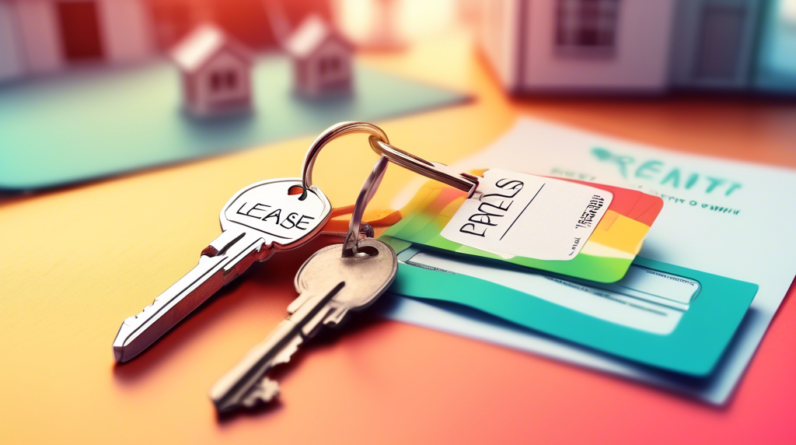
Understanding Rent-to-Own for Sellers
Rent-to-own, also known as lease-option or lease-purchase, offers an alternative route for selling your property. In this arrangement, a potential buyer, referred to as the tenant-buyer, moves in as a renter while having the option to purchase the property at a later date. This agreement blends aspects of renting and homeownership, presenting both opportunities and challenges for sellers.
Pros of Rent-to-Own for Sellers
Embracing rent-to-own can unlock several advantages for property sellers.
1. Expanded Buyer Pool
Rent-to-own attracts a broader range of potential buyers, including those who might not qualify for traditional mortgages due to credit history, down payment constraints, or unstable income. By tapping into this wider pool, you increase the chances of finding a suitable buyer for your property.
2. Potential for Higher Sales Price
In rent-to-own agreements, it’s common to set a purchase price slightly higher than the current market value. This premium compensates you for the flexibility and risks associated with waiting for the tenant-buyer to exercise their option to purchase.
3. Steady Cash Flow
Throughout the rent-to-own period, you receive regular rental income, providing a consistent cash flow that can cover mortgage payments, property taxes, and other expenses. This income stream offers financial stability while you wait for the sale to be finalized.
4. Motivated Tenant-Buyers
Tenant-buyers in rent-to-own situations are often highly motivated to transition into homeowners. They have a vested interest in maintaining the property and fulfilling their end of the agreement, leading to responsible tenancy and potentially fewer vacancies.
5. Potential Tax Advantages
Depending on the specific terms of the rent-to-own agreement and local tax laws, you might qualify for certain tax advantages. Consulting with a tax professional can help you understand the potential tax benefits associated with rent-to-own transactions in your area.
Cons of Rent-to-Own for Sellers
While rent-to-own presents several advantages, it’s crucial to acknowledge the potential drawbacks before entering such an arrangement.
1. Risk of Tenant-Buyer Default
One primary risk is the possibility of the tenant-buyer defaulting on their payments or failing to exercise their option to purchase. This scenario could leave you to restart the selling process, potentially facing legal complexities and financial losses.
2. Property Maintenance Responsibilities
As the legal owner, you typically retain responsibility for major repairs and property maintenance during the rent-to-own period. Unexpected repairs or significant maintenance costs could strain your finances and impact the profitability of the agreement.
3. Potential for Property Value Fluctuations
The real estate market is inherently dynamic, and property values can fluctuate over time. If the market experiences a downturn during the rent-to-own period, the agreed-upon purchase price might become less favorable than current market rates.
4. Legal and Regulatory Complexities
Rent-to-own agreements involve intricate legal and regulatory aspects that vary by jurisdiction. Navigating these complexities requires careful attention to detail and often necessitates seeking legal counsel to ensure a legally sound and enforceable contract.
5. Opportunity Cost
While waiting for the tenant-buyer to purchase the property, you might miss out on other potential buyers offering a more straightforward and immediate sale. This opportunity cost should be considered, especially in a seller’s market where properties sell quickly.
Factors to Consider Before Offering Rent-to-Own
Deciding whether to offer rent-to-own requires careful evaluation of your specific circumstances and risk tolerance.
1. Market Conditions
Assess the current real estate market in your area. In a buyer’s market with lower demand, rent-to-own can be an attractive option. Conversely, in a seller’s market with high demand, a traditional sale might be more favorable.
2. Financial Situation
Evaluate your financial capacity to handle potential risks, including the tenant-buyer defaulting or unexpected repair costs. Ensure you have sufficient financial reserves to cover mortgage payments and other expenses if the tenant-buyer fails to meet their obligations.
3. Property Condition
The condition of your property plays a significant role. Well-maintained properties with minimal anticipated repairs are better suited for rent-to-own agreements, minimizing potential maintenance burdens.
4. Legal Expertise
Engaging an experienced real estate attorney is crucial to draft a comprehensive and legally sound rent-to-own agreement. A well-structured contract protects your interests and mitigates potential legal disputes.
5. Tenant-Buyer Screening
Thoroughly screening potential tenant-buyers is paramount. Verify their credit history, employment status, and rental history to assess their financial stability and ability to fulfill the agreement’s terms.
Conclusion
Offering rent-to-own can be a viable option for property sellers seeking to expand their buyer pool, secure steady cash flow, and potentially achieve a higher selling price. However, it’s essential to weigh the pros and cons carefully, considering market conditions, financial readiness, property condition, legal complexities, and the importance of thorough tenant-buyer screening. By approaching rent-to-own transactions with careful planning and a clear understanding of the risks and rewards, sellers can make informed decisions aligned with their financial goals and risk tolerance.







